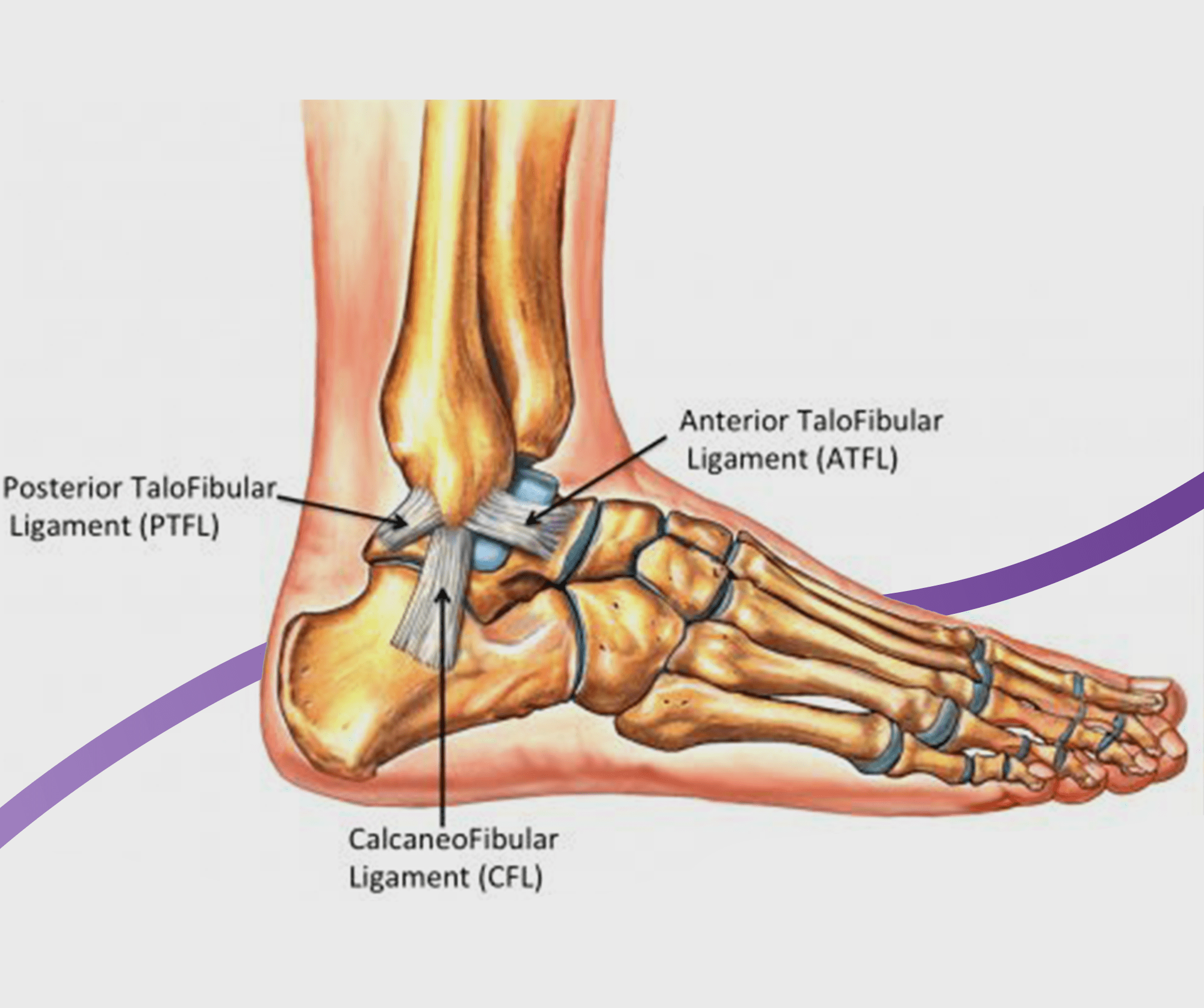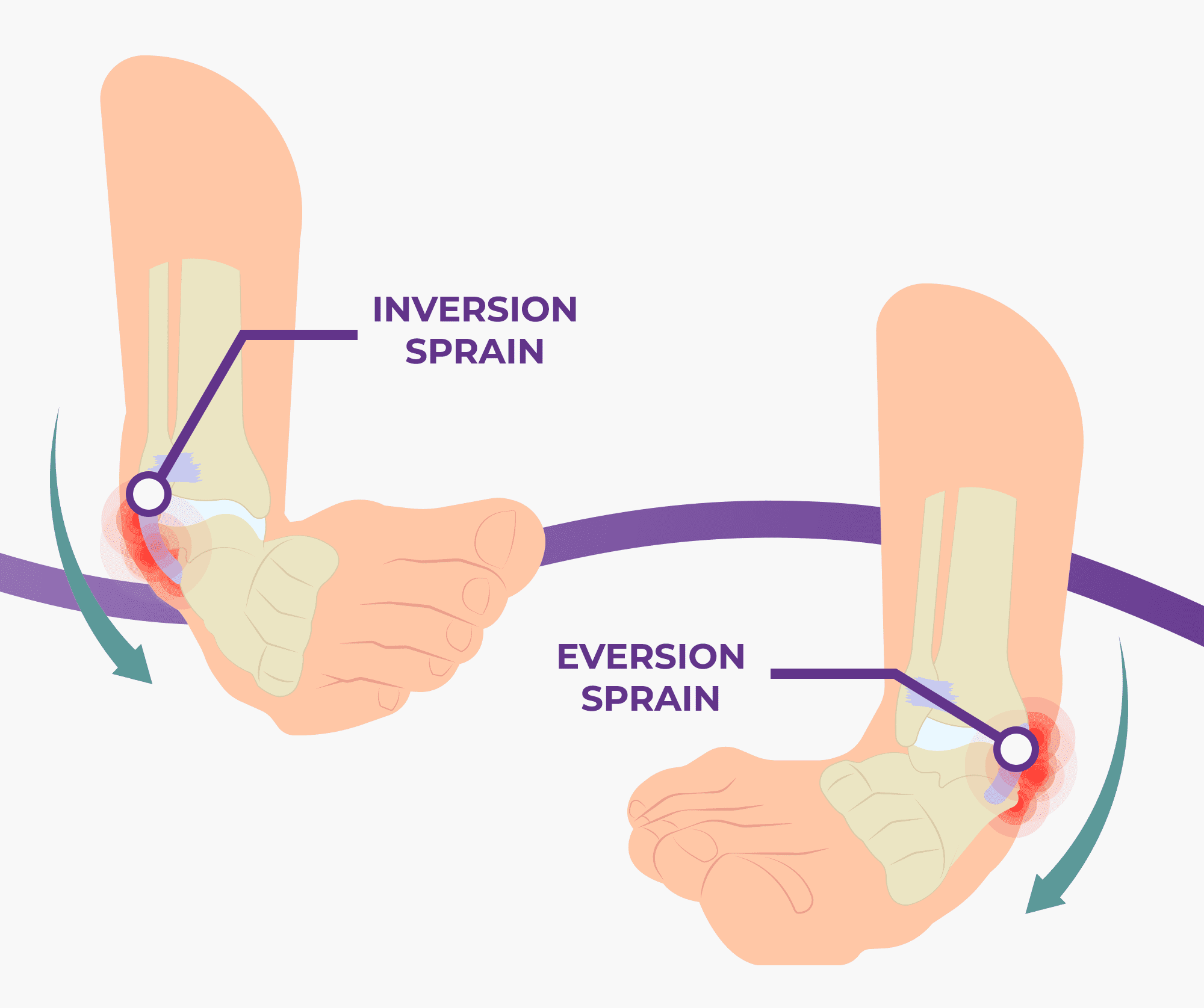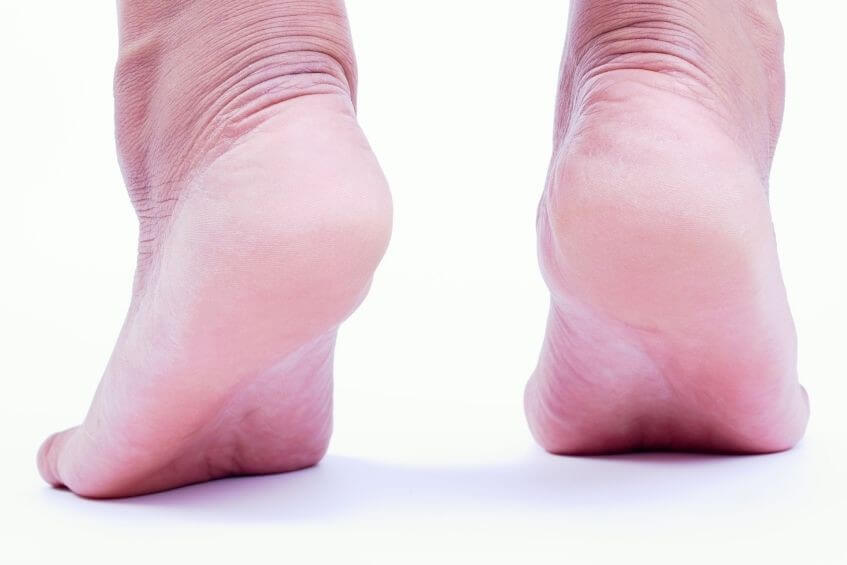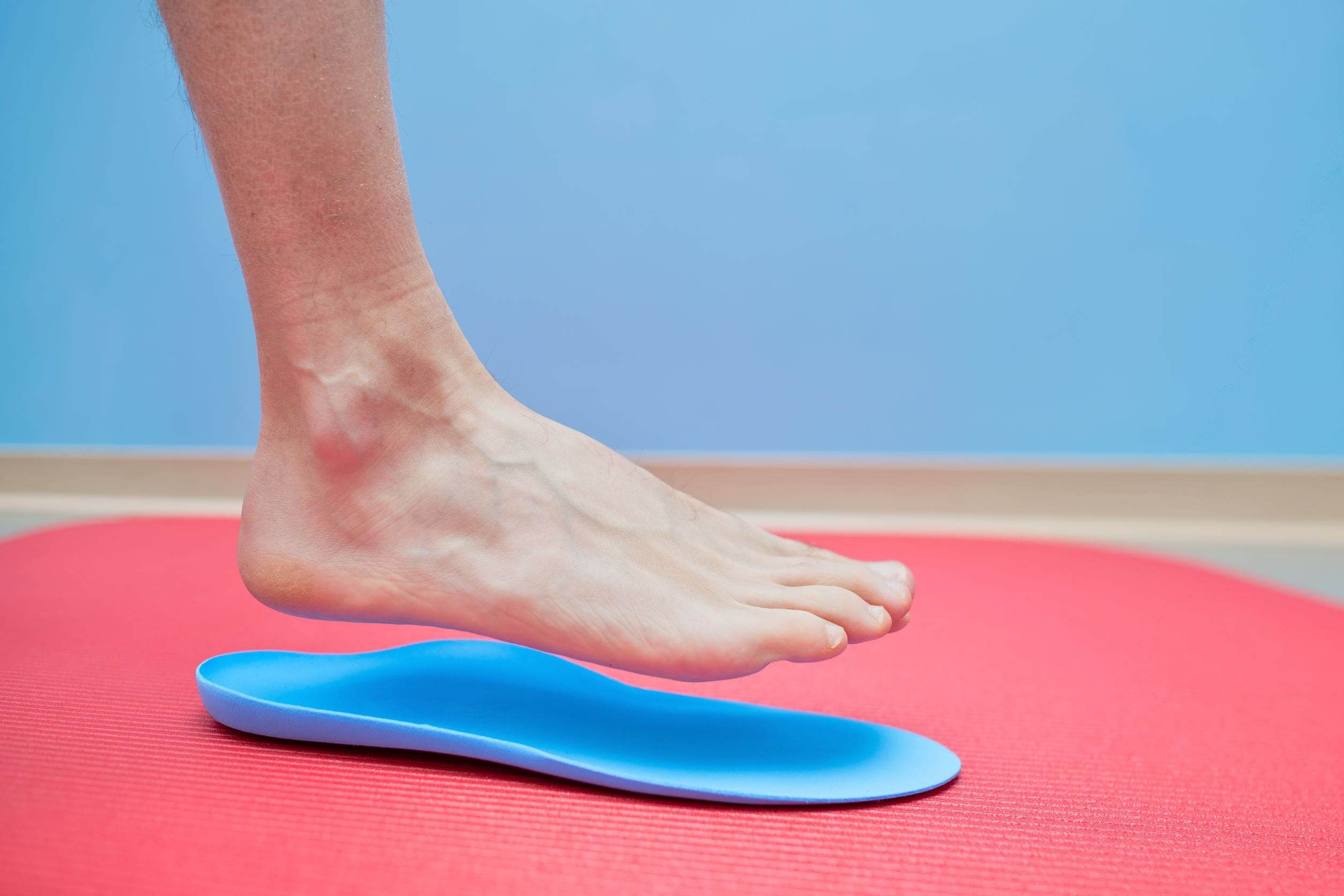
Jump to section
Ankle sprains are among the most common musculoskeletal injuries, both during sports and in everyday life. As they’re common, they’re often ignored, with many taking a “she’ll be right” approach to them and assuming they’ll get better on their own every time without considering the potential of any future consequences.
Even though ankle sprains are common, it’s crucial to take them and their treatment seriously, as ankle sprains that are not effectively rehabilitated can lead to long-term ankle weakness and instability, increasing the risk of future ankle sprains. Here’s what you should know about ankle sprains from our Brisbane podiatrists.

An ankle sprain is an injury to the ligaments that work to support and stabilise your ankle. Most often, this occurs to the ligaments on the outside of your ankle during an inversion ankle sprain, where the foot turns inwards, and you roll out on your ankle. This may damage the following:
Ankle sprains also occur to the ligaments on the inside of your ankle during an eversion ankle sprain where the foot turns
outwards and the ankle rolls inwards. While these are less common, the result is that they can damage your deltoid ligament and
cause notable pain. Regardless of which way you sprain your ankle, the ligaments suddenly get strained past the point they can safely
handle, causing them to become damaged, inflamed, painful and sometimes even bruised.

You can twist your ankle during any activity where you lose your balance and roll on your ankle. Some of the most common causes and therefore risk factors that we see include:
One of the biggest risk factors for ankle sprains is having sprained your ankle before, especially when you haven’t taken the time to properly rehabilitate the injury and help your ankle recover to full strength and function. Without good rehab, your ankle ligaments may still be somewhat affected, and may not be performing their supportive roles as effectively as they could otherwise be.
Other risk factors that have been studied include poor athletic conditioning (not enough preparation for the activities you’re doing), your muscle and ligament reaction time and fatigue, your balance, neuromuscular control and proprioception, and your position in the sport activities you play. While early research showed that women had a higher incidence of ankle sprains than men, more recent research is showing no significant difference in incidence between men and women and everyone is just as vulnerable.
When you roll onto your ankle during a sprain, you’ll likely feel immediate pain and discomfort. You may also experience some
swelling, bruising, weakness in the ankle, and walking on the ankle may become very painful. If your ankle sprain is so severe that you
experience a tear in one of the ankle ligaments, you may also feel a popping sensation during the sprain.
If you have recently twisted your foot and rolled onto your ankle and it is now feeling painful, weak or unstable, then there is a chance that you have sprained the ankle ligaments. If that’s the case, it’s important that you have your ankle examined so you can start on the right rehabilitation.
Absolutely. Podiatrists are experts in the foot and ankle, having studied this area of the body extensively for at least four years. Your podiatrist will be able to diagnose your ankle sprain and its severity, assess whether any other structures have been damaged in the process, and create a tailored treatment plan to get you back to full strength and function.
While you’re at home, try to avoid walking on the ankle immediately after the injury and avoid any movements that cause you pain. If the movement that you’re doing is causing pain, then you risk making it worse by applying more pressure and strain to the ligaments. Usually, this painful movement will be caused by twisting your foot in the same direction as your ankle sprain occurred.
To help reduce the swelling and manage your pain, you can use ice, applying it for 20 minutes three to four times per day through a towel or other covering so the ice is not in direct contact with your skin. If your pain is severe, you can use painkillers (NSAIDs) to help you manage the pain. If you have strapping tape available, you can also try strapping your ankle by following this instructional video. While you’re recovering, ensure you always wear supportive shoes that support and cup your ankle, and avoid heels, thongs or open sandals that allow your ankle to roll freely.
As the experts in foot and ankle care, your podiatrist will work with you to create a custom treatment plan to help get you back to full strength and function. Your treatment plan will very much depend on which ligaments have been injured, whether any other structures have been injured at the same time, the severity of your injury, your activity levels and your goals.
Here at The Feet People, our goal is to help you:
To help you do all of this, your treatment plan may include:
While it’s likely that the pain from your ankle sprain will eventually settle if you ignore it, there can be notable lifelong effects of not seeking rehabilitation.
Up to 20% of people who sprain their ankles continue to have joint stability issues after their injury, with ankle sprains being a leading cause of chronic ankle instability, a condition where your ankle is permanently weakened and less stable, which puts you at a much higher risk of recurrent sprains and other foot and ankle problems.
Chronic ankle instability also increases your falls risk, which is the largest cause of disability among seniors and the leading cause of unintentional injury deaths. The injuries sustained from chronic ankle instability often mean time off and the likelihood of surgery. Here is an example of professional hockey player Trent Mitton, whose quality of life and career were being threatened by recurrent ankle sprains, discussing the impact of one of our treatment solutions - the Exo-Brace - that we prescribed for him.
We believe that prevention is always better than cure, so when you’ve had one ankle sprain, we’ll work with you to put in all the right steps in place to help reduce your risk of another sprain. Proven ways to help reduce the risk of sprains includes:,
You’ll note that several of the preventative measures for ankle sprains are also involved in effectively treating them, meaning you get additional benefits from being proactive in your ankle sprain rehabilitation.

Our feet are the foundation for the entire body, so it's important that they have enough strength to tolerate our activity levels. Use
these three exercises to help strengthen your feet.

Not everyone needs orthotics, but they can play an integral role in treating or relieving pain in several foot and lower limb conditions.

The heat and humidity of an Australian summer makes it a prime time for issues to arise, so our newest podiatrist Lucy has put together
seven helpful tips to keep your feet healthy and problem free throughout summer.
| Monday | 7:40am - 6:00pm |
| Tuesday | 7:40am - 6:00pm |
| Wednesday | 7:40am - 6:00pm |
| Thursday |
7:40am - 6:00pm |
| Friday | 7:40am - 2:00pm |
| Saturday | CLOSED |
| Sunday | CLOSED |
Ground Floor, 344 Queen Street,
Brisbane City QLD 4000
| Monday | 7:40am - 6:00pm |
| Tuesday | 7:40am - 6:00pm |
| Wednesday | 7:40am - 6:00pm |
| Thursday |
7:40am - 6:30pm |
| Friday | 7:40am - 5:00pm |
| Saturday | 7:40am - 4:30pm |
| Sunday | CLOSED |
Newmarket Village, 114/400 Newmarket Rd, Newmarket QLD 4051